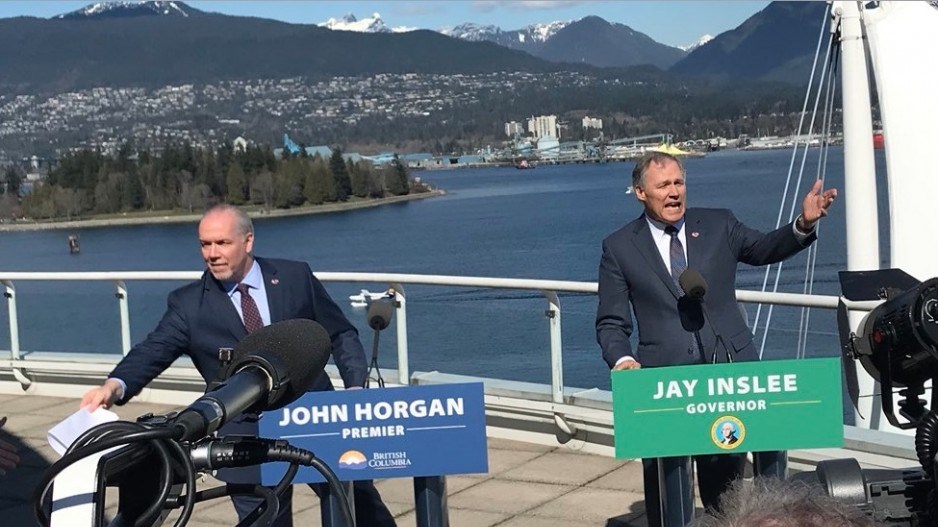The B.C. government will spend $300,000 to study various forms of a high-speed transportation system to Seattle, B.C. Premier John Horgan told a media scrum on March 16 in Vancouver.
Washington state's legislature last week approved funding for up to US$1.2 million toward the study.
The state already conducted a feasibility study on a high-speed link between Seattle and Portland and determined that various technologies were options. One possibility is an ultra-high-speed rail line that uses magnetic levitation technology (maglev). The various options to link Vancouver, Seattle and Portland cost between US$24 billion and US$42 billion and could attract around 1.8 million riders per year, according to that initial feasibility study.
The trip to Seattle from Vancouver could take less than an hour.
“We are innovative and we cannot wait to get on a high-speed rail line to come up to have the greatest hockey rivalry in North America – which is the Seattle Totems versus the Vancouver Canucks,” said Washington state Gov. Jay Inslee, while standing beside Horgan at Vancouver’s Canada Place.
He was referring to the likelihood that Seattle’s Oak View Group will be successful in its bid to join the National Hockey League in time for the 2020-2021 season.
“When you build a high-speed rail line, you are building a monument to optimism,” the governor said.
“We are optimistic about our growth prospects. We are optimistic about the technology, which is now coming online to allow this facility to blossom.”
The governor explained that the business analysis is designed to bring stakeholders in so government representatives can listen to perspectives from various business industries that could benefit.
“We are open to multiple technologies,” Inslee said. "There are multiple technologies that could work on this corridor - from high-speed rail to maglev to who knows what.”
Some attempts at high-speed rail in North America have been expensive debacles.
About a decade ago, for example, California voters narrowly approved a US$9.95-billion bond issue to partially finance what was billed as a US$40-billion high-speed rail system that would link the northern and southern parts of the state. The latest estimate for the line from the state's rail authority is US$77.3 billion, although that could rise to US$98.1 billion.
Construction has started on a 119-mile starter line in the central California San Joaquin Valley but the project as a whole has been mired with multiple revisions in terms of scope, timing and costs.
Horgan said the potential Cascadia region high-speed rail system could learn from California’s experience as well as high-speed rail trains around the world.
“I was recently in Asia – in China and Japan – on a trade trip and high-speed rail there, as the governor was pointing out, there’s a high-speed rail museum in Japan because it’s been in place so long there,” Horgan said.
“There are opportunities for us to learn from best practices around the world.”
Aside from the maglev option, which could transport people at speeds up to 600 kilometres per hour as the train is suspended in the air by magnets, there is also an option for high-speed rail, and a hyperloop option, where people are shuttled through a tunnel using vacuum technology.
The expectation is that the business-case study would be complete in 2019.




